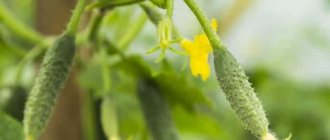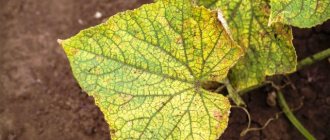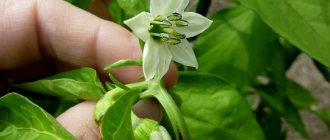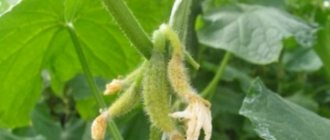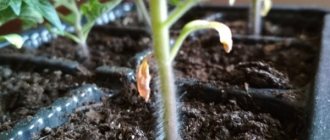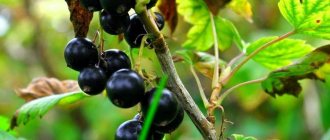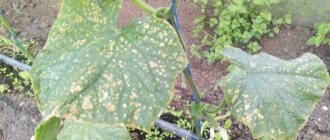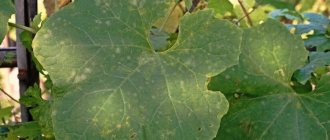Poor quality seeds
If you choose low-quality cucumber seeds for sowing in open ground (or a greenhouse), or for seedlings, you may encounter this unpleasant problem. What does low-quality seeds mean? This refers to seeds that the summer resident collected independently from his plants. After all, the seeds could have been obtained as a result of cross-pollination with hybrids, which means that they could grow into plants with unpredictable properties. In addition, young seeds (at the age of 1, 2 years) can be considered low-quality.
Solution to the problem:
- Buy cucumber seeds from reliable producers who have a good reputation and produce quality products.
- Choose more mature seeds for sowing, the ideal age is 3-4 years (at least 2).
- If you still want to sow young seeds, it is recommended to artificially age them (i.e., heat them) before planting. To do this, you need to keep them at a temperature of 25-28 degrees Celsius for 1.5-2 months.
Inappropriate growing conditions
For normal development, cucumbers need sufficient lighting, appropriate temperature and an optimal level of air humidity. The cause of yellowing of the ovary may be a violation of one of these factors.
Lack of lighting
If plants are deficient in sunlight, photosynthesis processes in the leaves are disrupted, and this factor negatively affects the ability to produce fruit.
The bushes do not have enough strength to properly form the ovary, and they begin to drop the growing fruits. Lack of lighting can be caused by dense plantings, dirty walls or improper location of the greenhouse. The main mistake of vegetable growers is the desire to plant as many plants as possible in a limited space.
In this case, cucumbers suffer not only from a lack of light, but also experience a lack of moisture and nutrients.
The norm for planting cucumbers in a greenhouse is 3–4 bushes per 1 sq./m. If larger quantities are allowed to be planted, it is better to thin out the plants. Then the remaining bushes will continue their normal development and the yellowing of the ovary will stop.
Air temperature is too high or low
The temperature range for proper growth and development of cucumbers is from + 18 to + 30 degrees. A short-term increase in indicators up to + 35 degrees is acceptable. Any violation of these parameters can cause a negative reaction from plants. Cucumbers that are frozen or overheated primarily react by resetting the ovary. Then the plants begin to wither, become sick and may die completely.
Sudden temperature changes
The problem of too large a difference between day and night temperatures is more typical for open ground cucumbers, but it can also affect greenhouse plants. Most often this happens in the spring. During the day, the walls of the greenhouse heat up under the sun's rays, and at night, when the ambient temperature is not yet high enough, the room quickly cools down. The cucumbers simply become overcooled, and therefore the ovary begins to shed.
Expert opinion
Istomina Karina Bogdanovna
Agronomist with knowledge and skills in growing vegetables
Special sensors help control and maintain the desired temperature in the greenhouse. But their installation is expensive and troublesome, so it is not always advisable for amateur vegetable growing. Such a device will justify itself only in cases of large-scale industrial use.
Optimal temperature difference for the crop:
- 6 – 8 degrees in spring;
- 10 – 12 degrees in summer.
Ventilating the greenhouse during the day and heating the air at night helps bring the indicators up to normal.
Inappropriate air humidity levels
The optimal humidity levels in a greenhouse for growing cucumbers are from 60 to 75%. Plants love high moisture content in the air, because they are of tropical origin.
But if droplets of water appear on the walls of the greenhouse, condensation begins to settle on the leaves. In this case, the plants rot and the leaves get burned.
In this state, the bushes simply cannot form fruits normally, since they devote all their strength to basic survival. A similar situation occurs if the air in the greenhouse is too dry.
The gardener's procedure for dealing with inappropriate air conditions is as follows:
- if the weather is dry and hot outside, spray the bushes on the foliage 1-2 times a day, additionally install open containers with water in the greenhouse;
- If condensation forms on the walls of the greenhouse, ventilate the room and wipe off the water with a dry cloth so that it does not settle on the foliage.
Pollination problems
Hand pollination of cucumbers.
The wrong choice of cucumber variety for growing in a greenhouse is a possible reason for the discarding of unfertilized flowers. For the greenhouse it is better to choose parthenocarpic varieties. They are distinguished by a predominantly female type of flowering and do not require the participation of insects in the pollination process.
If you plant bee-pollinated cucumber varieties in a greenhouse, it is important to provide insects with access to the flowers. You can attract their attention by opening all the doors and windows wide, as well as placing bowls with sugar syrup or honey solution inside. Laying melon or watermelon peels around the bushes is also effective. However, when using this method, keep in mind that the sweet aroma will attract not only bees, but also ants.
Pollination of flowers can be done manually. To do this, take a soft brush and use it to transfer pollen from male flowers to female ones. Alternatively, you can walk around the greenhouse every day, lightly tapping the vines with a stick.
Be careful when choosing seeds for planting cucumbers in a greenhouse. There are pollinating varieties that produce predominantly male flowers. These, for example, include cucumbers Gerasim and Hercules. They need to be planted in single copies to fertilize female flowers.
No crop rotation
Green manure in a greenhouse.
When a greenhouse is used only for growing cucumbers, the soil becomes depleted and filled with pathogens. To prevent this from happening, it is necessary to alternate crops.
The rules here are the same as in open ground. A certain crop can be returned to its original place no earlier than in the third year.
If such crop rotation is not possible for some reason, the greenhouse can only be used for planting cucumbers; there are 2 options for solving the problem:
- Annual replacement of the fertile soil layer to a height of 30 cm.
- Sowing green manure. After harvesting the cucumbers, sow the greenhouse with legumes, mustard or winter wheat. Without waiting for the crops to bloom, dig up the soil in late autumn.
Infection with diseases and pests
Numerous diseases and pests of cucumbers weaken the plants and disrupt the absorption of nutrients, which is manifested by yellowing and dropping of flowers and developing ovaries.
Mosaic
Cladosporiosis
Gray and white rot
The following diseases can lead to this result:
- gray and white rot - the fruits do not fall off, but dry out on the shoots;
- mosaic - the ovaries are covered with yellow specks;
- cladosporiosis - fruits rot and mummify.
You can correct the situation in the following ways:
- For rot - spraying with copper-containing preparations: HOM, Oxychom, Abiga-Pik, Ordan.
- For cucumber mosaic , destroy the diseased plant. Yellowing of the ovaries is the last stage of the disease; it cannot be cured.
- For cladosporiosis - spraying with Gamair, Pseudobacterin.
Possible causes of yellowing of the ovaries are also fungal diseases: bacteriosis, anthracnose, powdery mildew.
Spider mite
Aphid
The most dangerous pests of cucumbers that can affect cucumbers are:
- Spider mite - entangles leaves and shoots with a thin web, sucks juices from plant tissues. To combat mites, use acaricides or folk remedies (soap solution, infusions of garlic, tobacco, onion peels).
- Aphids are small insects that inhabit the underside of leaves and young shoots. A sign of insect infestation is curling and yellowing of the leaves, and the appearance of a sticky coating on them. Aphids can be destroyed with chemical or biological insecticides: Aktara, Aktellik, Corado, Fitoverm. In the early stages, washing the foliage with a soapy solution helps.
Aphids are actually a “pet” for ants. They feed on the sweet secretions of insects and specifically colonize various plants with them. If ants appear in the greenhouse, it means that aphids are already living on the underside of the cucumber foliage. Treat the plantings with insecticides and take measures to destroy ants.
Violation of the optimal temperature regime of air and soil
Cucumber ovaries turn yellow and dry out from too high or low temperatures in greenhouse air or soil, or from sudden temperature changes over a short period of time. Plants suffer greatly when it gets cold during the day and especially at night, since their ovaries grow at night. Under such conditions, the root system of cucumbers does not develop, or this process goes poorly and may even begin to die. In cold soil, healthy roots lose their ability to normally absorb nitrogen from the soil, and the ovaries lack the essential nutrient they need.
There is an ideal temperature that must be maintained in order for cucumbers to grow and develop normally. Before fruiting it is:
- 22-24 °C – in clear weather;
- 20-22 °C – in cloudy weather;
- 17-18 °C – at night.
When the cucumbers begin to bear fruit, the temperature needs to be increased slightly:
- 23-26 °C – in clear weather;
- 21-23 °C – in cloudy weather;
- 18-20 °C – at night.
For varieties pollinated by bees, all temperature indicators should be 1-3°C higher.
The maximum temperature that cucumber plants tolerate well is up to 36 °C, the minimum is 13-15 °C. Temperature conditions above and below these limits have a negative effect on vegetating cucumbers; they either overheat or become overcooled. All this has the most negative effect on the growth and development of the ovaries; they begin to turn yellow.
Sudden temperature changes most often occur in greenhouses. During the day, the air and soil in them become very hot due to the fact that excess heat cannot escape, and at night they cool sharply. No crop welcomes such temperature changes, but cucumbers are most sensitive to them.
Measures to combat overheating of plants include:
- ventilation of greenhouses in hot weather;
- whitening the walls and roofs of shelters with chalk;
- shading plants with white reed shields or mats;
- abundant watering in the evening;
- mulching the soil under cucumbers with hay, straw, fresh sawdust, black film or agrofibre of the same color.
To avoid a drop in temperature at night, low greenhouses are covered with another layer of film and dark-colored containers filled with water are placed in them. During the daytime, the liquid will heat up and accumulate heat, and at night, it will release it into the air space. In large greenhouses, if electricity is supplied to them, electric or infrared heaters are installed. Stoves that burn wood, sawdust and pellets, for example, such as Buleryan, are excellent for heating such structures.
Why do the ovaries fall off?
Affected specimens cannot be saved, but a new harvest can still be corrected
Another problem is when the ovaries begin to fall off and actively fall off in large quantities. There are several reasons and solutions here.
Under-pollination
If cucumbers are not self-pollinating, then they need help in this regard. In greenhouse conditions, there is a possibility that insects will do this. But on the balcony it’s not easy. If there are insects, then they are few and may not cope with their task. So go ahead and pollinate your cucumbers by hand.
Extremely hot weather
This problem occurs in the summer. To alleviate the cucumber's suffering, spray it with cool water and increase the air humidity on the balcony: place a couple of containers with water near the pots.
Watering with cold water
Such actions cause stress in the cucumbers, which is why the ovary begins to fall off. Therefore, before watering, leave the water at room temperature for 3-4 hours.
The bush has too many formed side shoots
Then energy and strength are spent on them, and not on the ovary. Everything is simple here - eliminate the unnecessary ones by trimming.
Lack of useful elements
The ovaries also fall off when the plant lacks phosphorus or potassium. Here, gardeners and gardeners make a common mistake - they apply manure fertilizers. But they contain a lot of nitrogen, which affects the formation and growth of green mass. For ovaries, choose other means. For example, phosphorus flour or potassium carbonate. They are applied to the root part at a rate of 5 g per bush.
Now you know why the ovaries of cucumbers on the balcony fall off. As you can see, there is no need to be afraid of this. Everything can be corrected. Moreover, if you start the restoration procedure immediately, the yield will not even suffer
.
And it happens that no matter how hard you try, the embryos do not grow. In this case, find out why cucumber greens may not grow on the balcony. This information helped me a lot at the time.
Weak root system
With a weak root system, the plant cannot fully provide itself with nutrition and moisture. In this regard, normal ovaries also cannot form, or they immediately begin to turn yellow.
Solution to the problem:
- Handle cucumber seedlings carefully, without damaging their roots when picking or transplanting.
- Observe the timing of sowing seeds for seedlings in order to plant the plants in open ground or a greenhouse at the right time. And thus, the root system will be quite strong and developed.
A large number of ovaries
Hybrid cucumbers can produce a lot of female fruit. A large number of fruits require a lot of nutrition, and if the ovaries of cucumbers dry out, it means that there are few nutrients in the soil. When the plant does not have enough nutrition for new fruits, it begins to shed newly formed embryos. To solve this problem, you need to either additionally feed the bushes or remove excess ovaries.
- Installment plans for businesses and pensioners
- How to properly treat coronavirus at home
- 5 places where you can relax in Russia in summer 2020
Lack of light
Cucumbers are one of the most demanding crops in terms of daylight hours. You need to make sure that the cucumber plantings have enough light at the stage of installing the greenhouse.
Light deficiency can also be caused by other green plants grown in a greenhouse. Often, beginning gardeners plant as many crops as possible in a greenhouse, and some begin to outstrip others in growth, shading them and preventing normal sunlight.
Violation of agricultural technology, namely refusal to pinch the bush, does not allow it to form correctly and contributes to the growth of side shoots. And they also shade the bush itself and nearby plantings.
What to do:
- Correctly orient the greenhouse to the cardinal points. For regions with a temperate climate, located in the middle zone and northern regions, the orientation of the greenhouse from east to west is considered optimal. In the southern regions it is advisable to place it from north to south.
- Try to plant cucumbers in the greenhouse according to the following scheme: parthenocarpic hybrids - 1-2 plants per 1 sq.m., and bee-pollinated varieties - 2-3 plants per 1 sq.m. Give the plants more space and then they will have enough light.
- Pinch the top part of the shoots and make sure that its length does not exceed 20-25 cm. Long shoots take away a significant part of the plant’s vitality, and it begins to wither.
- In a timely manner, “blind” the axils of the leaves, in which tendrils, side shoots and flower buds are hidden. As the plant grows, these “freeloaders” need more and more nutrition. By removing them, you will protect the mother bush and allow it to develop without wasting energy on forcing additional shoots and flowers.
What to do: the best folk remedies
As soon as you notice that the flowers on the cucumber vines turn yellow and fly off, you need to try to understand why this is happening. Having found the cause of the problem, you can eliminate it and thereby save the harvest.
Trimming and pinching
If an excessively large number of stepsons have formed on the bush, then it is recommended to cut off all the lower shoots up to the fifth leaf blade. On the remaining stepsons you need to cut off the leaf plates, leaving only two of them.
If there is rapid growth of the lashes, then they will need to be pinched at the tops. Immediately after this, active growth of lateral shoots will begin, and a large number of female flowers will form on them
Top dressing
If there is a lack of nutrients, the plants should be fed as soon as possible on the foliage with a solution of one of the following products: Ammofoska, Potassium Sulfate, Diammofoska or Nitrophoska. When preparing the solution, strictly follow the manufacturer's instructions.
For foliar feeding, you can use the following solution: 10 liters of water, one tablespoon of urea and three tablespoons of wood ash. Treatment is carried out in the evening at sunset.
If the soil is saturated with nitrogen, then the bushes experience intensive growth of greenery, while very few ovaries are formed. To correct the situation, the bushes are watered with a superphosphate solution.
To prepare it, combine 3 liters of just boiled water with twenty tablespoons of superphosphate. Mix everything well and refrigerate for 24 hours, but do not forget to shake the mixture regularly. To prepare the working solution, pour a couple of tablespoons of the mixture into 10 liters of water.
Drying the soil
If the soil in the garden bed is waterlogged, then even wildly flowering cucumber bushes do not form ovaries. In this case, it is recommended not to water the plants for several days until their foliage begins to wither. In this stressful situation, the bushes begin to actively produce a large number of female flowers.
Dropping
If the shoots rot, the roots will not be able to deliver the required amount of nutrients to the flowers, which will cause them to fly around en masse.
In this case, the lower part of the stem is bent to the soil surface and covered with a layer of earth, and the affected area is removed. After a while, roots will grow on the shoot, but until this happens, it is better to cut off most of the ovaries. It is also recommended to feed the stems with complex mineral fertilizer.
Pest treatment
If the abscission is due to the fact that pests have settled on the plant, then it is recommended to spray it with one of the following folk remedies:
- 3 tablespoons of ammonia are dissolved in 10 liters of water;
- 1 liter of water add a quarter of a piece of grated laundry soap and 1 tablespoon of baking soda;
- infusion of onion peel;
- a mixture of potassium chloride and superphosphate (1:2);
- add 0.3 kg of wood ash to a couple of liters of water, boil the mixture for half an hour, and then dilute it with 1 bucket of water.
If the bushes have not yet begun to bear fruit, they can be treated with one of the pesticides: Commander, Aktara or Alatar. The following drugs are more harmless: Fitoverm, Biotlin and Kleschevit.
Diseases and pests
Rapid drying and yellowing of the ovaries provoke various diseases. First of all, these are bacterioses that affect weakened or densely planted shrubs. The optimal environment for their development is temperature fluctuations.
Wilting is often observed due to root rot. The plant seems healthy, but is drying out at the top. Rot disrupts the flow of nutrients to all parts of the bush.
Pests
In addition to agrotechnical ones, there are also biological reasons that provoke wilting of cucumber ovaries.
The most famous pests that attack young plants:
- spider mite;
- nematode;
- aphid;
- black flea beetle;
- ants;
- whitefly
Insect activity peaks in mid-summer. Aphids, for example, overwinter in the basal part of the leaves of the weed, and in the spring they actively spread throughout the area. It is impossible to notice a spider mite right away; its presence is indicated by the cobwebs entangled in the plant. The pest quickly attacks crops, sucking the juice out of them and preventing them from developing. As a result, the plant dries out and dies.
The black flea beetle is considered the most dangerous pest; it is capable of completely destroying a plot of cucumbers in a matter of days. The whitefly is no less dangerous: after its attack, the leaves and ovaries turn yellow and fruiting stops.
Common diseases of seedlings and adult bushes
Insufficient or improper care of young, strong cucumbers can provoke the development of dangerous diseases even in the protected environment of a room or glassed-in balcony (see table).
| Disease | Signs | Consequences | Treatment |
| Powdery mildew | A whitish-cloudy coating similar to spilled flour | Death of the bush, deformation of the fruit, decreased taste | Removing diseased leaves, spraying with insecticides (Topsin, Karatan, Bayleton), soil disinfection |
| Root rot | Difficulties in timely identification due to intrasoil development. Dark slimy spots at the bottom of the stem | Complete destruction of roots | Impossible. Preventive measures are used - disinfection of seeds and soil (steaming) |
| Copperhead (Anthracnose) | Brown spots and dry patches | Fungal disease that damages leaves and fruits | Very difficult and not very effective. Use Bordeaux mixture (1% solution) |
| Gray rot | Ashy coating with a wet texture on all parts of the plant | Deep lesions of leaves, flowers, ovaries and ripening cucumbers | Lime powder or copper sulfate |
| Blackleg | Thinning of the base | ||
| White rot (Sclerotinia) | Cotton-mucous growths | Rapid rotting of leaves and stems | Spraying with copper sulfate or sprinkling the affected areas with fine lime |
The main microclimatic factor causing diseases of cucumbers on the windowsill is excessive humidity, which occurs due to excessive watering and neglect of frequent ventilation. Don’t forget about the pests that can settle on cucumber bushes indoors. The most common ones are spider mites and aphids. To prevent and control these dangerous insects, concentrated onion and tobacco decoction are used, respectively.
Lack of minerals
Cucumber ovaries also turn yellow and fall off in cases where all the nutrients in the soil have been exhausted and no additional fertilizing has been applied. Plants react no less sensitively to excess or incorrect ratios of added additives.
Typically, parthenocarpic cucumber hybrids suffer most from changes in the balance of minerals and macroelements. They need abundant watering, which, in turn, leaches potassium and nitrogen from the soil. It is the lack of these substances that should be compensated first. Before planting cucumbers, you should add 30 kg of manure per 1 square meter. m with digging the soil to a depth of 25 cm. What to do:
- Reduce or stop feeding manure.
- For 10 liters of water add 1 tbsp. urea, 3 tbsp. wood ash, mix thoroughly and spray the stems with the resulting solution.
- Use the drugs Sortvorin, Brexil calcium, Master, Kristalon and Kemiru according to the instructions.
- Fertilize the soil with wood ash at the rate of 300 g per 1 sq.m.
Problems when growing cucumbers on a windowsill
Most negative results are caused by violations of agrotechnical processes, an unsuccessful planting site, or a lack of microelements for nutrition. The main problems when growing cucumbers indoors:
- poor growth;
- lack of ovary development;
- abundance of barren flowers;
- yellowing of buds and leaves;
- delayed fruit ripening.
Important! With the right approach to growing cucumbers on a balcony or windowsill, the time to harvest the first harvest comes within 30-45 days.
Cucumbers don't grow well
Problems with the normal development of greens are often associated with violations in the preparation of seed. It is necessary to use special paternocarpic varieties that do not require pollination by insects. Most of them are high-yielding hybrids of the first generation (marked F1):
- “Hummingbird F1”, “Balagan F1”;
- "Tomboy F1", "Garland F1";
- "Urban cucumber F1", "Natasha F1"
- “Balcony F1”, “Calendar F1”;
- "Marinda F1", "Masha F1".
It is advisable to give preference to bush varieties with early ripening. If the seeds are not brightly colored (a sure sign of treatment with a growth stimulant), you need to pre-soak the seeds in a disinfecting solution of pink potassium permanganate (for 2-3 hours). This is followed by daily exposure to a biostimulating preparation, for example, “Kornevin” or “Epin-Extra”, which are successfully replaced by an aqueous solution of aloe juice (20g/100g).
Peat cups are used for planting. Shoots appear in 5-6 days and require regular watering. It is mandatory to use fertile soil with good natural aeration, which you can buy ready-made in the store or prepare it yourself. A soil mixture consisting of garden soil, peat, sand (proportion 4:1:1) has proven itself well. It is also worth adding humus and wood ash at the rate of 150-200 g per 3 liters of mixture. The optimal temperature range is from +18-19°C at night and from +21-24°C during the day.
Important!
Using soil from a summer cottage or flowerbed to successfully grow cucumbers on a windowsill requires preliminary calcination at high temperature (+120°C for 30-40 minutes) to destroy insect pupae and pathogens.
When the seedlings are 5-10 cm high, they are transplanted into the main growing container. Please note that for the plant to grow healthy, it needs 2-4 liters of soil. It is possible to plant seedlings in pairs in pots of 5-7 liters or more.
You may be interested in:
Why cucumber leaves curl: reasons, treatment Leaves can become deformed due to a deficiency of substances, which can be easily corrected by feeding. But sometimes the reason...Read more...
Every 10-14 days, seedlings are fed with specialized store-bought or homemade fertilizers - 1/3 teaspoon of urea per 1 liter of boiled water or a concentrated infusion of eggshells. Dosage – 200 g of solution for one seedling.
Ovaries do not develop
At home, it is necessary to use only paternocarpic varieties. If the bag of seeds does not indicate that the cucumbers are self-pollinating or do not require pollination by insects, you should not purchase them. In case of an unsuccessful purchase, there is no hope for the appearance of buds capable of forming a fetal embryo.
Other reasons that negatively affect the development of the ovary include:
- unhardened seeds;
- watering with cold water;
- excessive moisture;
- excess nitrogen fertilizers, additives;
- excessive thickening of bushes.
Important!
It is necessary to shape the cucumbers in a timely manner, pinching the main stem, and carefully pinching them.
If there is excess nitrogen in the soil and an active process of green mass growth is observed, you can add a small amount of superphosphate by diluting 1 tablespoon of the substance in 5 liters of warm water.
barren flowers
A large number of empty flowers indicates violations of the permissible temperature regime or the use of a variety that requires pollination. If there are male and female buds, it is necessary to transfer pollen from the first to the second using a soft brush.
You may be interested in:
Fusarium wilt of cucumbers: causes of manifestation, methods of treatment Fusarium wilt of cucumbers is a common phenomenon caused by infection of the vascular system...Read more...
If paternocarpic species are planted, most likely the problem is related to critical temperature changes - too hot or cold (below + 14-15 ° C). Temperatures above +32-35°C lead to irreversible processes in pollen and disrupt the function of the fruit ovary. Additional factors that provoke the formation of barren flowers are dense foliage, excess shade, heavy soil (a growth stimulator such as Epin is recommended).
Leaves and embryos of cucumbers turn yellow
Quite often, “apartment” gardeners have to deal with an unpleasant situation when cucumbers turn yellow and begin to dry out. The most likely cause is a lack of nutrients in the soil. An always accessible way to overcome the problem is to add rotted humus at the rate of 120-150 g per 2-2.5 liters of water. But the most correct method is to make a complex fertilizer from 25-30 g of wood ash, three parts of 10-15 g of potassium, nitrogen, and phosphorus additives, which are diluted in 2.5-3 liters of warm water.
Other reasons why cucumbers on the windowsill turn yellow:
- unstable temperature conditions with a decrease to +10-12°C or an increase of more than +35°C;
- tight landing and strong density;
- bacteriosis due to excess watering.
Important!
An effective treatment for bacteriosis of a cucumber bush is spraying with Bordeaux mixture or a dark pink solution of potassium permanganate.
Cucumbers don't ripen
The key to successful fruiting of cucumbers on a balcony or windowsill is regular care of the growing bushes. Depending on the variety, the pollination process and the density of the green mass are carefully controlled. Indeterminate species require formation of the stem with pinching of lateral shoots and pinching off the top after 9-11 leaves. Of particular importance is constant watering with water without chlorinated impurities (settled, boiled, rain, filtered). The soil must contain a sufficient amount of phosphorus and potassium, necessary for the development of fruits, but not be acidic. The standard feeding regime is once every 2 weeks.
An effective method for overcoming the problem of indoor cucumbers not ripening is spraying with boric acid. The solution recipe is 1 gram of substance per 1 liter of warm water.
Other reasons for delayed ripening of cucumbers:
- excess ovaries that the plant cannot provide with sufficient nutrition for growth (guideline - no more than 30-35 flowers per bush);
- early fruiting, when a young plant without sufficient leaf cover and a poorly developed vegetation system produces side shoots with buds (it is better to remove them);
- excess humidity due to lack of ventilation, stimulating the growth of leaves rather than fruits;
- sudden change in temperature;
- hot microclimate, reducing the intensity of sap flow.
You should carefully choose the location for placing the pots to ensure good lighting throughout the day. For growing homemade cucumbers, a window sill that faces south, southeast or southwest is optimal.
Improper watering - excess or lack of moisture
Cucumbers, as humid tropical plants, are very partial to moisture, but in order for them to grow and bear fruit, they need to be watered correctly. Before fruiting begins, watering should be moderate, and with its beginning - more abundant. The optimal frequency of watering is every 1-2 days, in hot weather - daily (or even 2 times a day - morning and evening). In general, you need to look at the condition of the soil - if it is dry, you definitely need to water the beds. If the ground is wet, you can skip the next watering. The main thing is to maintain a balance, since a lack and excess of liquid in the soil is equally unfavorable and can lead to yellowing of the ovaries.
Water for watering this crop in a greenhouse must be free of chlorine and warm (23-25°C); cold water is not allowed (such liquid causes temperature stress to the roots, which ultimately affects the condition of the entire plant, including the ovary).
The best time for such events is evening or early morning. There is no need to do this during the day: the water will quickly evaporate, this will only increase the air humidity, while the plants themselves will be able to receive moisture in a minimal amount.
Fruits turn yellow and fall off
Viral mosaic of cucumbers cannot be treated. The diseased bush must be removed, healthy bushes must be treated with an antiviral drug.
And sometimes fruits that begin to gain weight turn yellow and fall off. This condition can be caused by:
- Prolonged excessively high ambient temperature . In this case, the plants should be covered with paper from direct sunlight. Water every day.
- Bacterial infections . For prevention, you need to spray cucumbers every 10–14 days with drugs that increase resistance to diseases.
You can hope for a good harvest if measures have been taken to disinfect the seeds before planting. And after the emergence of seedlings, the plants are properly cared for.
Thickened plantings
Cucumbers need a lot of light for normal growth and fruiting. Despite the fact that the beds for growing them and the greenhouses are always located in a sunny place, the plants themselves can shade each other. This happens if the seeds or seedlings were planted too densely.
At the initial stage of development, a small area is enough for plants. But with the growth of the bushes and the increase in green mass, the fruits find themselves in dense shade, which provokes yellowing of the ovaries and their subsequent falling off. Bee-pollinated varieties and hybrids throw out barren flowers, delaying fruiting.
Correct placement of plants can correct the situation. When choosing planting schemes and calculating the number of cucumber bushes per 1 m2, it is worth considering:
- sizes of beds in greenhouses and on the ground;
- design of shelters and trellises;
- whether the cucumbers being grown belong to one or another variety or hybrid;
- the degree of climbing of the plant;
- method of forming a bush;
- timing and place of cultivation.
On average, 3 to 6 cucumbers are placed per 1 m2. A gardener can obtain basic recommendations regarding the selected variety or hybrid from the manufacturer’s instructions on the seed packet. They must be adhered to in order to prevent thickening of the plantings and yellowing of the fruits.
Causes of yellowing and wilting of the ovary in a greenhouse
If the ovaries on your greenhouse cucumbers have turned yellow, withered, or even fallen off, this may indicate the following:
- Formation of too many ovaries.
- Incorrect water treatment schedule.
- Lack of certain nutritional components - macro- and microelements.
- Violation of crop rotation rules.
- Poor or unsuitable soil for cucumbers.
- Thickened planting.
- Sudden temperature changes.
- Prolonged cloudy cold weather.
- Lack of light.
- Damage by diseases and pests.
- Not pollination of varietal plants.
- Cross-pollination of hybrids/varieties.
- Incorrect harvesting.
It is important to correctly understand the cause in order to stop and eliminate the loss of ovaries.
yellowing of cucumber leaves in a greenhouse
The bush grows without formation
In a greenhouse, one of the reasons why cucumber ovaries turn yellow is the lack of formation of the bushes. On the ground, this problem manifests itself less, when walking and here, when growing crops vertically, the bushes need to be looked after.
Most varieties and hybrids intended for cultivation in greenhouses intensively increase green mass. This is facilitated by a special microclimate, as well as enhanced nutrition of the plantings. While the bushes are occupied with leaves and shoots, they do not bear fruit. In addition, greens also suffer greatly from shading.
Shaping the plants will help speed up the ripening process. It consists in removing the first ovaries, side shoots and leaves from the cucumber, forming a so-called blind zone at the bottom. Depending on the timing of cultivation and the characteristics of the variety or hybrid, it may vary. On average, from 3 to 8 first nodes are subject to blinding.
Next, the side shoots of the cucumbers are pinched as they grow and old and excess leaves are cut off. The mustache is removed, on which the plant also consumes a lot of nutrition. Follow the recommended schemes:
- for specific conditions (heated or unheated, high and low greenhouses);
- growing time (early spring, spring-summer, autumn-winter);
- type of cucumbers (bee-pollinated, parthenocarpic);
- growing location (open or closed ground).
When using molding, the fruits receive enough nutrients and light and do not turn yellow.
Why don't cucumbers bloom?
If the cucumber seedlings have developed correctly, then thirty to forty days after planting the seeds, flowers will appear. When flowering does not occur, there is a reason why cucumbers do not bloom.
To prevent this situation from occurring, you must:
- water the cucumbers with warm water in the morning or evening;
- plant vegetable seedlings at a distance of twenty-five centimeters from each other;
- remove shoots and buds in the axils of the lower leaves;
- purchase vegetable seeds from trusted manufacturers;
- feed with complexes containing potassium and phosphorus, eliminating nitrogen before flowering;
- disinfect the soil before planting seeds;
- add chalk or slaked lime to the soil.
To prevent the problem of lack of flowering or the appearance of barren flowers, purchase seeds of parthenocarpic varieties or self-pollinating hybrids. And then the question: “why do the ovaries fall off and turn yellow” will not bother you.
Problems with pollination of cucumbers
If there are problems with pollination of female flowers, the ovaries will not form. As a rule, this problem applies to bee-pollinated varieties of cucumbers. Bee-pollinated varieties of cucumbers need to be planted in open ground, because insect bees will have difficulty getting into the greenhouse.
However, even in parthenocarpic hybrids (self-pollinating), pollination does not occur: at low temperatures the pollen does not ripen, at high temperatures the pollen becomes sterile.
What to do if pollination of cucumbers does not occur:
- If you have a bee-pollinated variety, then pollinating insects (bees, hornets) are needed for pollination. If they are not observed near the plants, then insects should be attracted to the site. The easiest way is to spray the bushes with honey solution (1 tablespoon of honey per 10 liters of water).
- If even after manipulations to attract insects they do not arrive, then you should pollinate yourself. You should also perform this activity when growing bee-pollinated cucumbers in a greenhouse. To pollinate cucumbers by hand, you need to pick the male flower-barren (they grow on a thin stem), and touch it to the stigma of the female flower (at its base there is a thickening similar to a small cucumber). The pollen must land on the stigma. It is recommended to pollinate one female flower with two or three male ones.
- When growing parthenocarpic cucumber hybrids, measures should be taken in case of adverse weather conditions. As mentioned above, when it gets colder, you need to cover the bushes with arcs with agrofibre (in open ground), and in the greenhouse you can additionally cover the walls with foam film. In case of hot weather, you need to water in the morning and evening (including spraying the plants).
Why do the ovaries of cucumbers turn yellow?
Sometimes, instead of the long-awaited cucumbers forming, the ovaries on the cucumbers do not develop, but dry out and fall off. Let's try to figure out why cucumber ovaries turn yellow and what to do in this case, because this problem is familiar to many gardeners.
Causes of drying ovaries
Planting density Cucumber is a light-loving plant; with a lack of light, the ovaries turn yellow and fall off. So that the cucumber lashes receive a sufficient amount of sunlight per 1 sq.m. no more than 2-4 plants should be placed, and when growing parthenocarpic hybrids - no more than one or two bushes. When planting, follow the recommendations on the package.
Large green mass During the growing season, plants form a huge green mass, so it is necessary to carry out stepsoning: without exception, all stepsons originating from the axils of the 2-5th leaf should be pinched, the shoots located above the 2nd leaf should also be pinched. With enough light, cucumber ovaries will not turn yellow and fall off. Features of the variety Modern productive varieties of cucumbers, especially those that do not require pollination, are distinguished by a large number of ovaries; they are located in each leaf axil. The plant cannot “feed” such a quantity of fruits, so it gets rid of some or all of the ovaries at once. To prevent this from happening, you should remove excess ovaries, cutting them off before the flowers bloom. On average, 25-30 fruits can form and ripen on one cucumber bush.
Provided that only part of the ovaries turn yellow and dry out, and the rest develop normally, nothing needs to be done, the plant itself knows how many fruits it can feed.
Frail plants Sometimes, on a young and weak plant that has not gained green mass, but with a long central and lateral stems, cucumbers begin to set. The plant cannot provide the developing fruits with nutrients, so it gets rid of the ovaries. Therefore, on young and unformed plants, the lashes need to be partially cut off and the flowers removed.
Lack of pollination If you prefer not only modern varieties, self-pollinating or parthenocarpic, but also traditional ones, the ovaries may dry out due to lack of pollination. If fertilization of female flowers does not occur, the ovary will not develop further, will turn yellow and dry out.
What to do in this case? We offer several options:
1. To attract bees and other pollinating insects, spray the bushes with sweet water with the addition of boric acid, 1 g per 1 liter. If the weather is “non-flying”, windy, cloudy, rainy, or vice versa, hot, pollinate manually. To do this, lightly touch the male flower with the female one, or transfer pollen with a brush to the female peduncle.
2. Next to modern productive varieties that produce female flowers, plants are planted that also produce male flower stalks.
Pollination does not occur in hot weather; temperature increases above +27 degrees make the pollen sterile, so be sure to ventilate greenhouses in hot weather. We recommend reading the article on how to grow cucumbers in a greenhouse.
Why do cucumber ovaries turn yellow in open ground?
Untimely harvesting Vegetables in the beds should not be allowed to outgrow; a large number of overripe fruits gives a kind of signal to the plant that it has fulfilled its purpose by producing offspring with seeds. After this, the formation of new ovaries is significantly reduced.
Unfavorable temperature conditions
Cucumbers are very thermophilic; temperatures favorable for fruit formation are about +21...26 degrees during the day and +18...+20 at night. If the nights are cold, the roots begin to die due to temperature fluctuations, leading to yellowing of the leaves and ovaries. To protect against overheating, be sure to mulch the soil; to preserve heat in greenhouses and greenhouses, install containers with water, which, heating during the day, give off heat at night.
Watering For abundant flowering and fruit formation, cucumbers need proper watering. Ideally, the temperature regime of soil and water should be the same, 23-25 degrees. Cold water leads to yellowing of leaves and ovaries.
At the beginning of flowering, in order to form a large number of female flowers, watering is stopped for several days. After the foliage has wilted slightly and the soil has dried, watering is resumed, and the volume of water is increased. Be careful not to dry out the soil, otherwise all the ovaries will fall off.
Watering during flowering and fruiting is carried out 3 times a week, in hot weather - daily.
Lack of nutrition If there are not enough nutrients, the cucumber bush will get rid of the ovaries in order to survive. How often and with what should I feed cucumbers if the ovaries turn yellow? Cucumber vines should be fed once every 7-10 days, combined with watering. During the formation of green mass, cucumbers need nitrogen and phosphorus, and during the fruit growth phase, phosphorus and potassium.
When feeding only fertilizers rich in nitrogen (infusion of mullein, grass, chicken droppings), but with a deficiency of potassium, the ovaries may dry out. A lack of microelements is indicated by curling and yellowing of the ovary at the tip.
To correct the situation, cucumbers are sprayed with a solution of ash and calcium nitrate; 3 tablespoons of ash and 10 grams of nitrate per 10 liters are taken per 10 liters of water. water. This solution can also be added to nitrogen fertilizers.
You can also use ready-made fertilizer, Kemira or Mortar.
Diseases of cucumbers Another reason why cucumber ovaries turn yellow is root rot, which causes the cucumber vines to dry out from the top.
Due to damage to the roots, there is not enough nutrition for fruit formation, so the ovaries fall off. To save the plant, the lashes are bent to the surface of the soil, covering the healthy part of the shoot with soil.
After time, the vine will take root and the plant will recover.
Ovaries also die due to various bacterioses, which primarily affect weakened plants growing with a lack of light and nutrition, as well as significant temperature fluctuations. Fungicides are used to treat these diseases.
about why the ovaries of cucumbers turn yellow
We have described the most common causes of yellowing and drying of cucumber ovaries. Watch the plants, timely measures will help preserve all the greenery and get the long-awaited harvest.
Source: https://ogorodnik.net/pochemu-zhelteyut-zavyazi-u-ogurtsov/
What to do to save the harvest?
Before taking measures to save the crop, it is necessary to find out the true reason for the wilting of cucumbers.
Experienced gardeners advise applying fertilizer first to prevent nutritional deficiencies. Use complex formulations “Diammofoska”, “Ammofoska”, “Potassium sulfate” and others.
Folk remedies are no less effective: 1 tbsp. l. urea, 3 tbsp. l. Dilute wood ash in a bucket of water. Spray the cucumbers with the solution after sunset so as not to cause burns on the foliage.
To save the harvest, ensure complete pollination of flowers. When grown in greenhouses, this is done manually - pollen is transferred with a soft brush from male to female specimens. In open ground, you need to attract bees by leaving containers of sweet water with sugar or honey on the site. You can also plant fennel, basil, chamomile, and calendula nearby.
If there are too many shoots on the bushes, they will have to be removed. All lower shoots are removed up to the fifth leaf. The vines that are actively stretching upward should be pinched, and the plant will then produce many side shoots with female flowers.
An obligatory stage of reanimation work is pest control.
Cucumbers are treated against insects with the following compounds:
- infusion of onion peel;
- solution of ammonia (3 tablespoons diluted in a bucket of water);
- a solution of baking soda and laundry soap (1 tablespoon per 1 liter of water);
- chemicals - “Commander”, “Aktara”, “Alatar” - are used exclusively before fruiting.
Biological preparations “Fitoverm”, “Kleschevit”, “Biotlin” are considered less dangerous and harmful.
Diseases of cucumbers on the balcony and their treatment
The situation with diseases is more serious. If treatment measures are not taken in time, the bush can easily die. Therefore, it is important to know which ones are most common and how to overcome them.
In the fight against diseases, fungicides are more often used rather than folk remedies.
In this regard, I have highlighted the following:
Cladosporiosis
Commonly known as brown olive spot. The name comes from the symptoms. Round green-brown or olive ulcers appear on the foliage and tops. On the third day they darken and increase significantly in size. Occurs in cool and humid weather, as well as during temperature changes. As a result, the bush lags behind in growth, withers, and if nothing is done, it will die. To combat this, a set of measures will be required:
- Stop watering (for 3-4 days).
- Make sure that the temperature does not fall below 20 degrees Celsius.
- Use “Oxychom” for spraying, which is diluted in the proportion of 20 g of the drug per 10 liters.
- Repeat the treatment after a week.
White rot
The sore is unpleasant, since the rotting process is accompanied by a nasty smell. In the first stage, multiple white bodies appear. Over time, they spread throughout the bush and change their color to darker (even black). Then the process of rotting begins (everything is damaged: leaves, stems and even fruits). A white coating and mucus appears on the surface. The causative agent is a fungus that spreads in wet weather. To eliminate the disease, cut off all damaged areas to healthy tissue. Treat the cut areas with crushed coal. Fertilize with: 10 g of urea, 1 g of zinc sulfate and 1 g of copper sulfate per 10 liters of warm water. The bush has overcome the disease, congratulations, it will continue to live. If you can't handle it, you'll have to tear it out and throw it away.
Anthracnose
The main distinguishing feature of the disease is brown spots that appear on leaves and stems, which gradually begin to dry out. The fruits are covered with wet ulcers of the same shade. To combat, treat the plant with Bordeaux mixture. To prepare the required solution, you will need to dilute 25 ml of 3% Bordeaux mixture in 10 liters of water.
You will find other diseases of cucumbers and measures to combat them in the following video:
| Cucumber diseases | Are they being treated or not? |
| White rot | Under treatment |
| White mosaic | There is no treatment, just vomit |
| Cladosporiosis | Under treatment |
| Anthracnose | Under treatment |
| Green mosaic | Can't be treated |
Don't want to grow cucumbers? Then read about growing tomatoes on a windowsill. This is also a good alternative.
